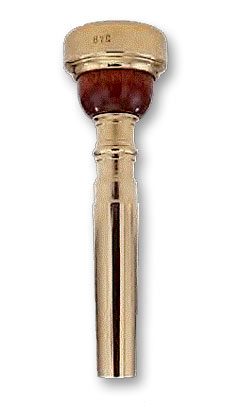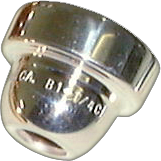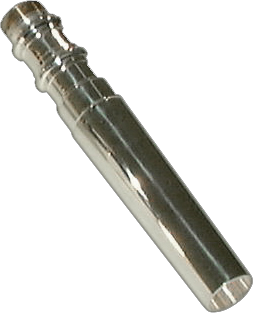Anatomy
Kanstul Modular Mouthpieces

Interchangeable backbores, provide flexibility and customization options
Kanstul Musical Instruments is pleased to offer a line of precision mouthpieces. These unique mouthpieces combine the best of the most popular designs and the most accurate technology available today. We are currently building a stock of mouthpiece tops which includes the most popular models on the market today as well as some that would be considered “special order” from other manufacturers. All are in stock and ready for delivery. Modular mouthpieces mean interchangeable backbores that allow using your favorite top with a Piccolo, Symphonic, or Commercial backbore. This provides the flexibility you need in today’s musical environment. The custom combination without the wait. More importantly it provides the consistency from one mouthpiece to another so that if you lose or damage one we can replace it.
The Cup
 In general, a large cup lowers the pitch of an instrument, while a small cup cup raises the pitch. Therefore, it is important to match the cup of the mouthpiece with the pitch of the instrument. Also, due to variations in embouchure, air support, and physical characteristics among musicians, individuals should select a cup which improves overall intonation. Large cups will amplify the volume of sound, resulting in a fuller and darker timbre, by amplifying the lower partials and diminishing the high frequency overtones. Players should refrain from using very shallow cups to compensate for the lack of experience.
In general, a large cup lowers the pitch of an instrument, while a small cup cup raises the pitch. Therefore, it is important to match the cup of the mouthpiece with the pitch of the instrument. Also, due to variations in embouchure, air support, and physical characteristics among musicians, individuals should select a cup which improves overall intonation. Large cups will amplify the volume of sound, resulting in a fuller and darker timbre, by amplifying the lower partials and diminishing the high frequency overtones. Players should refrain from using very shallow cups to compensate for the lack of experience.
The correct depth of the cup depends upon the pitch of the instrument, and, to some degree, the bore. For example, a Bb piccolo trumpet requires a shallow cup, while the fluegelhorn demands the use of a deep cup. A good starter mouthpiece would be one with a C or B cup. Then, with experience as your guide try others according to the styles of music you play. For example a jazz musician who continually plays in the extreme high register and desires a brighter sound should use a more shallow mouthpiece such as a B3D, B3E, B3F, with the 76 or 41 backbore. Or a B5SV with a 25 backbore. The symphonic player might chose the B1 1/4C, B1X, or 2C with a 24 backbore. We suggest trying various models and consulting with your instructors and peers.
The Backbore
 The backbore of a mouthpiece has a relationship to the rim, cup shape, and throat. If the backbore of a mouthpiece is too small, the high register will be stuffy and flat in pitch. If the backbore of a mouthpiece is too large, the mouthpiece will not have sufficient resistance and the player will need to build his endurance. Backbores must be described by their playing qualities. It is not actually possible to identify backbores by size alone because they also vary in shape. Various combinations of size, and shape make the tone darker or more brilliant, raise or lower the pitch and increase or decrease volume.
The backbore of a mouthpiece has a relationship to the rim, cup shape, and throat. If the backbore of a mouthpiece is too small, the high register will be stuffy and flat in pitch. If the backbore of a mouthpiece is too large, the mouthpiece will not have sufficient resistance and the player will need to build his endurance. Backbores must be described by their playing qualities. It is not actually possible to identify backbores by size alone because they also vary in shape. Various combinations of size, and shape make the tone darker or more brilliant, raise or lower the pitch and increase or decrease volume.







